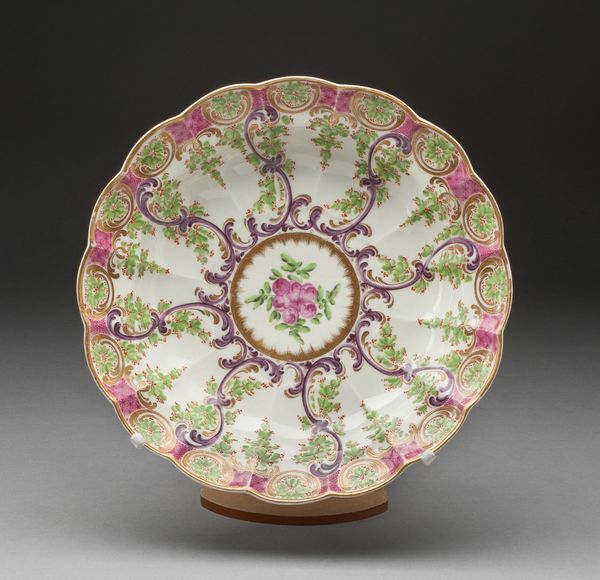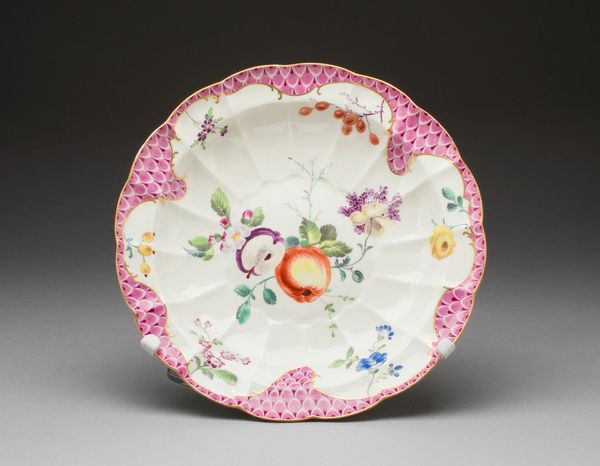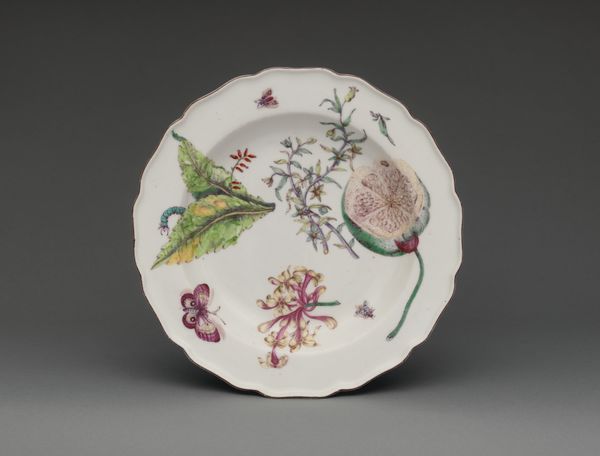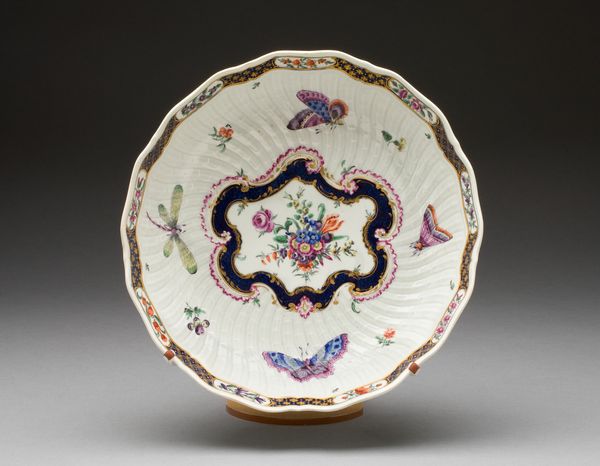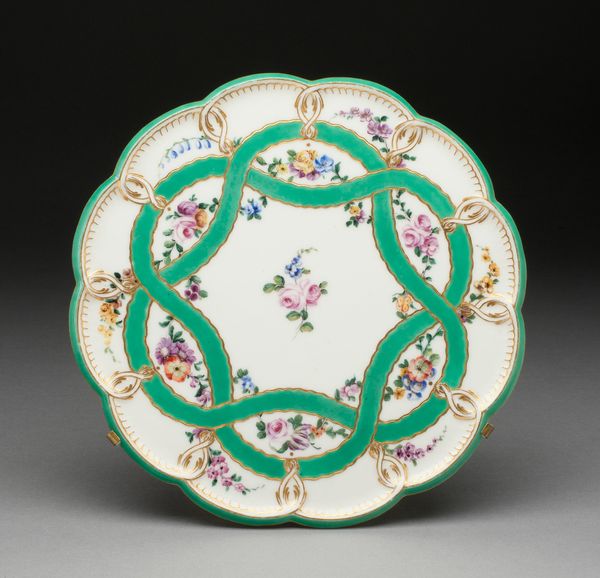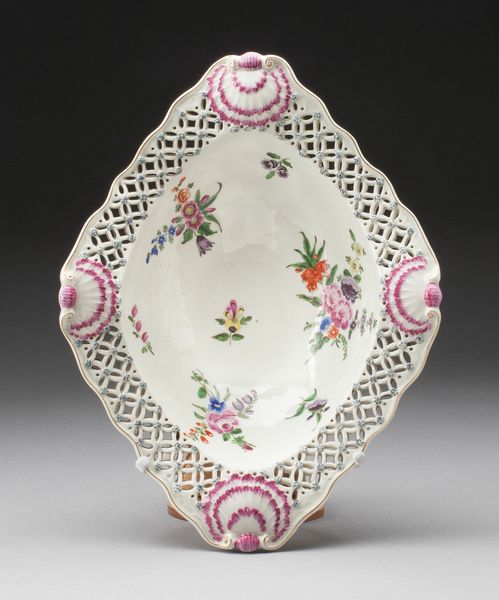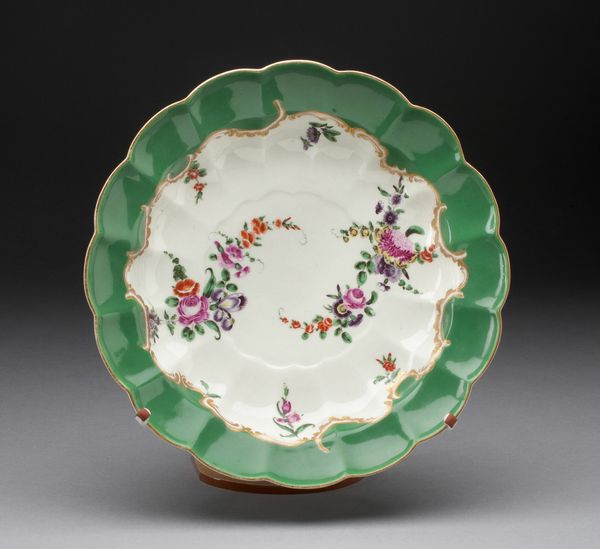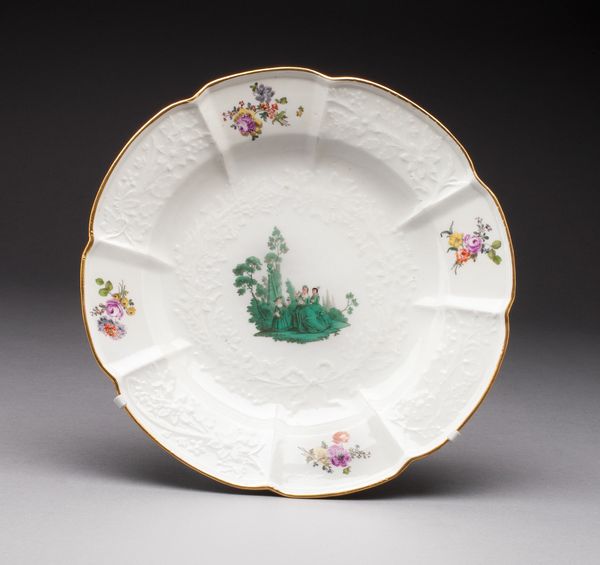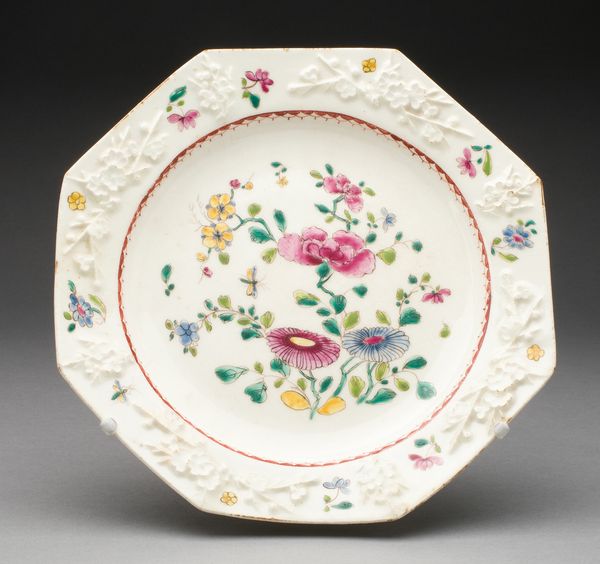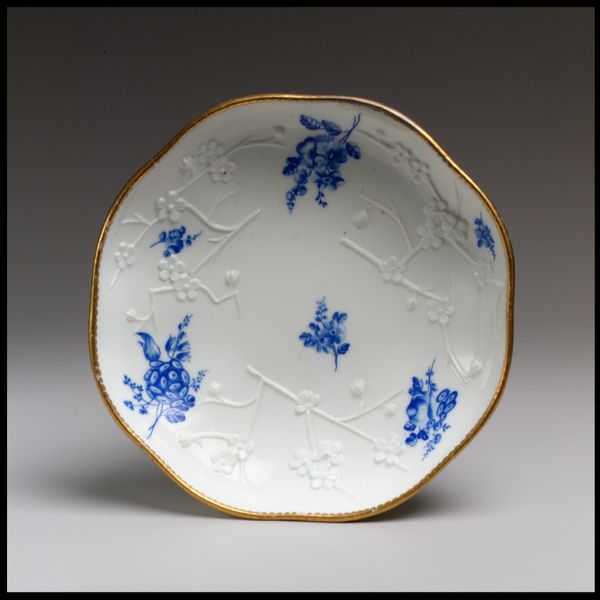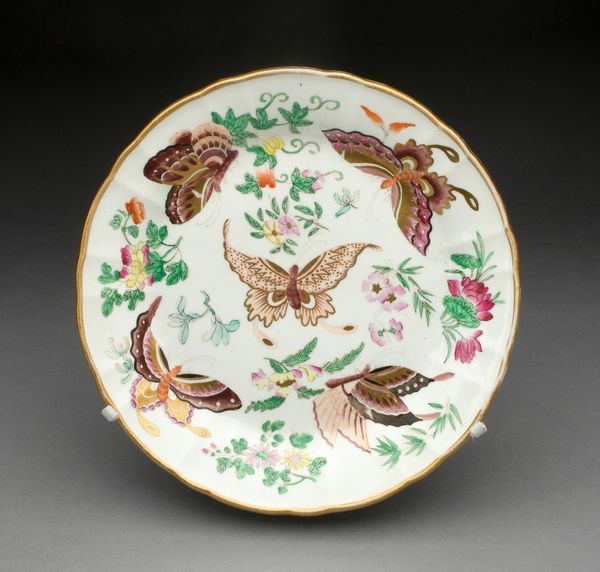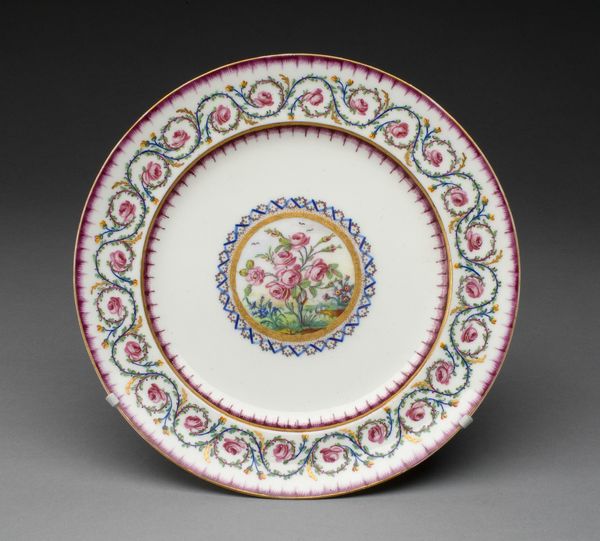
porcelain
#
porcelain
#
decorative-art
#
rococo
Dimensions: Diam. 18.7 cm (7 3/8 in.)
Copyright: Public Domain
Editor: Here we have a porcelain plate created around 1770 by the Worcester Royal Porcelain Company, now at the Art Institute of Chicago. The delicate floral designs in pink really pop against the white porcelain. What strikes you most about this piece? Curator: The industrial processes behind what looks like a purely decorative object. We see “art,” but it was the industrial division of labor within the porcelain factory that enabled such mass production of these luxury items for wealthy patrons during the Rococo period. Editor: So you’re less focused on the aesthetic appeal and more on how it was made and for whom? Curator: Precisely. This isn’t just about aesthetic appreciation. Consider the conditions for the factory workers producing these plates: long hours, potentially dangerous materials, and little control over the final product. The intricate design serves to mask the intense labor behind it. Editor: It's a little unsettling to think about that when you just see a pretty plate. Does that industrial context affect your reading of the floral patterns themselves? Curator: Definitely. The floral design, fashionable at the time, speaks to consumerism. Porcelain became synonymous with social aspirations. These weren’t unique artworks so much as a new status symbol widely available for purchase. In truth it is a very carefully controlled commodity that hides behind refinement. What do you think about that commodity then and now, in today's society of Instagram and Etsy? Editor: Wow, that’s given me a lot to think about regarding consumerism then and now, thank you.
Comments
No comments
Be the first to comment and join the conversation on the ultimate creative platform.
